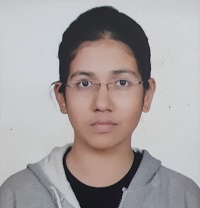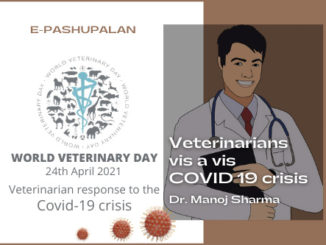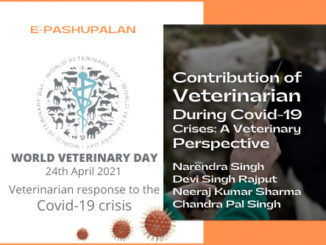When China informed WHO about a bunch of cases with pneumonia-like symptoms, the Coronavirus disease seemed like an abstraction, a concealed ailment in the remote country of China that triggered a scare of sorts. But it was not “our concern”.
When in January’20, a 20-year-old female, who had travelled from Wuhan, presented to the Emergency Department in General Hospital, Thrissur, Kerala, with a one-day history of dry cough and sore throat, tested positive, that abstraction became a reality for us. Suddenly, it was no longer someone else’s problem. The virus had hit home.
Subsequently, after a month of the first report of infection, the organization also identified this virus as “2019-novel coronavirus (2019-nCoV)”, and Novel Coronaviral Pneumonia and CoV-associated diseases were referred to as “COVID-19” on February 11, 2020. The virus belongs to family Coronaviridae, order Nidovirales, and are large, enveloped, positive-stranded RNA viruses, having the largest genome among all RNA viruses known. The nucleocapsid protein forms a helical capsid around the genome, which is then enclosed by an envelope. It consists of a spike protein that forms large protrusions from the virus surface, giving coronaviruses the appearance of having crowns and hence their name as corona in Latin means crown.
As of April 11, 2020, approximately 1,741,621 cases of COVID-19 have been confirmed in over 210 countries and territories and claimed 106,670 deaths. This infection was so burgeoning that the WHO soon declared it as a global pandemic. The urgency of the situation sent a wave of panic and trepidation through people. In order to gain a little hold over the situation, nationwide lockdown was imposed. However, in the wake of this unprecedented calamity, the medical community, being called ‘corona warriors’, emerged as true warriors who selflessly fought the infection on the frontlines, putting their own lives at risk.
Veterinary professionals also acquired the status of ‘corona warriors’ after Dr. Chirantan Kadian, President of India Veterinary Association (IVA) urged the Central Government, in a letter addressed to Department of Animal husbandry and Dairying, New Delhi, to extend this status to veterinarians as veterinary services are emergency services and require careful intervention and management round the clock. According to the data provided by the National Informatics Centre (NIC), currently there are 28328 Veterinary Doctors and 54928 Para-vets who are offering their services in COVID times.
In the last year, zoonotic infections have killed over 2 million people and sickened over 2 billion people. Zoonotic diseases are becoming an increasing issue as nearly 60% of existing human infections and more than 75% of those discovered in the last two decades can be traced back to animals.
In the control of zoonotic diseases like this one, veterinarians have a very crucial role to play in the prevention and management of the diseases. The importance of veterinarians can be seen in animal and public health disease monitoring to deter disease outbreaks, particularly zoonotic diseases. They have extensive experience and skills in dealing with the spread of pathogenic viruses among wild animals, as well as epidemics triggered by new or exotic pathogens introduced into highly susceptible animal populations. This would significantly lead to the study of SARS-CoV-2 animal reservoirs as well as the implementation of sampling techniques used for animal disease monitoring and adaptation to the COVID-19 epidemic. Indeed, from a One Health viewpoint, the contribution of public health veterinarians may be envisioned and substantiated across various degrees of expertise, such as prevention and control of previous animal outbreaks, virus monitoring of livestock, laboratory facilities to diagnose and recognize pathogens such as SARS-CoV-2, processing of human and animal COVID-19 samples, animal testing and vaccine development for humans and livestock, and animal import risk assessment.
Virus monitoring of animals
It is well acknowledged that about 75% of infectious diseases in humans are zoonotic in nature. Overseas, emerging infectious diseases do not only affect rodents, bats, and monkeys. Historically, dogs, cats, zoo animals, and local wildlife populations served as sentinels for biological and chemical threats. Humans are coming into closer contact with animals bearing bacteria that can be transmitted to people as a result of environmental damage caused by intense agriculture, ground clearing, erosion, wildlife trade, and climate change. Given that there are an estimated 1.7 million undiscovered viruses in mammalian and avian hosts, up to 850,000 may be capable of causing the next animal-human spill-over. To foresee and avoid possible future pandemics caused by new viruses, researchers must first learn about their origins, genetic variability, and geographic spread in reservoir species, as well as identify hotspots where proactive zoonotic disease surveillance can be directed. Veterinary virologists play an important role in manifesting coordinated surveillance research on the aetiology of viral zoonoses and their effects on animal, human, and ecosystem health by analysing virus evolution, especially their distribution and pathogenesis in domestic and wild animals. A three-year veterinary surveillance study in Northwest Italy, took coronavirus and paramyxoviruses (PMV) as its subjects because of their known capacity to transform hosts and zoonotic potential, and accomplished to characterise viral diversity in the bat population. PCR was used to identify and characterise 20 new coronaviruses and three PMV strains. Studies like this show how veterinary monitoring efforts carried out in particular geographic areas will help researchers learn more about the extent of viral transmission in bats (or primary hosts) that live in close proximity to other animal hosts, which has clear consequences for human disease prevention. However, a stronger integration of human medicine and veterinary science is facing hurdles to be centrally structured within the public health system. But under the umbrella of One Health Approach, there are strong examples of cooperation, like the collaborative projects like PREEMPT, PREDICT and PREDICT 2 projects in the U.S. Agency for International Development USAID’s Emerging Pandemic Threats (EPT) and EPT-2 programs, backed by informatic pipelines for exchanging interconnected data on animal, human, and environmental health, as well as offering evidence-based tools for policymakers and risk assessment studies.
Prevention of livestock epidemic
Veterinarians have considerable field expertise in the prevention of bacterial and viral diseases (e.g., foot and mouth disease, contagious bovine pleuro-pneumonia) and zoonoses in the past (e.g avian and swine flu, brucellosis and tuberculosis). They also gained a particular aptitude for ‘getting ready in the field’ and performing an array of tasks, such as diagnosis, epidemiological investigations, molecular/antigenic characterization, and surveillance programme preparation, based on the lessons learned in the handling of so many animal health emergencies. Veterinary medicine can provide a valuable contribution to expertise to public health for the control of infection in human populations, given the experience gained by veterinarians in the epidemiology of diseases within populations, using active and passive surveillance systems, and risk analysis. For COVID-19, a simple veterinary protocol has been proposed that will set up real-time active random monitoring, with the target of measuring COVID-19 outbreaks reliably and critically and have a strong effect on the long-term control of epidemics. The procedure is fit-for-purpose and can be tailored to varying conditions and degrees of responsiveness, providing that resource limitations (notably a broad and adequate supply of tests) are resolved and cooperation between veterinary epidemiologists and public health officials is appropriately improved.
Vaccine Delivery
The advancement of the genome sequencing technology (Next-generation sequencing) and related global exchange of sequences and bioinformatics research has resulted in a significant acceleration in the fight against COVID-19.
In fact, in countries like, U.S. and U.K., veterinarians have been called to administer COVID-19 vaccines to improve the efficiency of vaccine delivery system.
Furthermore, veterinarians strongly promote the advancement of human therapies and vaccines for a variety of disorders, as seen in the case of COVID-19, where use of animal subjects, especially those vulnerable to SARS-CoV-2, such as ferrets, pigs, and rodents, as well as the availability of artificial intelligence systems and algorithms, serve the purpose. In India, universities like Indian Veterinary Research Institute (IVRI) and DUVASU, Mathura have already assigned their faculties to research on this novel deadly virus.
Indeed, animal science has led to the effective delivery of vaccinations against human diseases such as influenza, measles, and human papillomavirus, which have saved millions of lives, and also, to the development of animal vaccines against zoonoses such as Ebola, which is consistent with the One Health strategy. The modern vaccinations, like the vector-vaccine technology, which is the culmination of integrated research and interdisciplinary teamwork, are an outstanding example of a One Health policy, which allows for the delivery of solutions that support animals, humans, and communities all at the same time.
Diagnosis and molecular characterization of the COVID-19 virus
The global ability of health-care systems has been seriously strained by the COVID-19 pandemic, especially in countries that were unprepared to delay the virus’s propagation and “flatten the curve” of new cases. Aside from hospital overloading, other pressing concerns surfaced, such as a shortage of equipment and supplies, outdated personal protective devices, and COVID-19 testing. To assist public health laboratories with their heavy workloads, veterinary laboratories in several EU countries tested human samples for SARS-CoV-2, developed common diagnostic and data sharing protocols, and provided masks and other protective materials to hospitals, as well as key equipment such as respirators.
Animal Import Risk Assessment
International travel faces significant threats for the spread of SARS-CoV-2. The veterinarian expertise in assessing animal import risk will assist the government in developing a COVID-19 risk plan for international air travel. Animal import vulnerability methodology can be easily revised and tailored to COVID-19 prevalence estimates, allowing countries to determine the effect of any future improvements to intercontinental trade.
Veterinarians have long been a key prominent group of health practitioners on a global scale, because of their expertise, know-how, and commitment to support the health and welfare of animals, humans, and the community. They’ve always been on the cutting edge of virus surveillance and zoonosis surveillance among animal reservoirs, and have successfully implemented a variety of monitoring and management methods and sampling techniques in the field of animal infectious epidemics.
But the virus knows no boundaries and is increasing at a threatening pace and a lack of appropriate response by one country can make global control and protection less successful. The control on the pandemic depends on collaboration between countries and coordination of relevant agencies, politicians, and experts at the national level.
The COVID-19 pandemic, like previous pandemics (SARS, MERS), demonstrates the importance of promoting the One Health viewpoint, which considers human and animal health to be interdependent and intimately related to ecological health, among medical and veterinary professions, by bridging the dichotomy between public and animal health. To completely operationalize the One Health model, it is critical that veterinarians, especially veterinary epidemiologists and virologists, have a prominent role in the COVID-19 outbreak control and surveillance systems at the national and international levels. In the future, it is hoped that social and financial synergy will be achieved for the advancement of epidemic information networks and monitoring platforms directed at the detection and tracking of emerging zoonotic pathogens, as well as awareness of the factors that lead to the pandemic transmission, putting animal and human public health specialties together with risk analyzers and epidemiologists to cope with future pandemics more successfully.






Be the first to comment